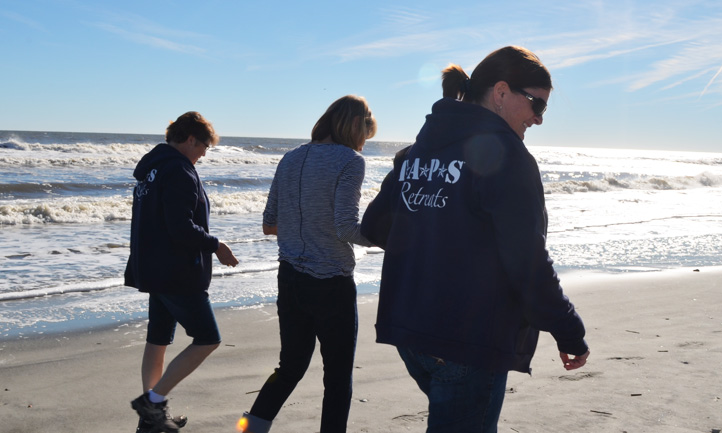Walk This Way: Therapeutic Walking as Healing
Author: Lalaine Estella
Those of us who work in bereavement know there is no one way to grieve. Just as there are many forms of grief, there are as many ways to support the person who is grieving.

Some people are really good at articulating their feelings and processing their emotions verbally. Some are not comfortable talking about what they are going through and may internalize their feelings. Others may use art, physical activity or writing as outlets to express themselves.
Knowing that there are differences in the way people grieve, Felicia Marquez-Wong created a grief support program that speaks to those who are looking for an opportunity to talk about their loved ones while providing social interaction with others, and some exercise.
Felicia, the manager for social work and bereavement services at St. Francis Healthcare System in Hawaii, created Walk in the Mall, a grief support group that has been providing a structured grief walk once a month for 17 years.
"The Walk in the Mall provides socialization and opportunity to share their losses in a safe environment. Walking is a safe way to exercise and it reduces stressors," Felicia says. Groups start with brief introductions and mild stretching before the walk, and a licensed clinical social worker leads the group. "It is open to the community, so anyone is welcome. They may walk either with a seasoned or longtime griever or stay with the facilitator depending on their needs," she says. After the walk, there is grief education and an invitation to brunch nearby where another hour is spent socializing.
"I have learned to listen better to others, and respect the courage it takes to bring your heartache and talk about it," said one regular participant. "I love walking and taking part in it and the brunch makes sure I talk and laugh with some people."
Cathy Campbell, manager of bereavement services at Hospice of Washington County in Maryland, says her Grief Walks program was developed for the "instrumental griever," one who typically is not comfortable sharing emotions and prefers physical expressions of grief. "They may clean the house from top to bottom, or go to the garage to tinker or work out in the garden," she says. "There are many different, healthy ways to express grief. Our grief group is casual and flexible and tries to reach those with different styles of expression."
The Grief Walks program is held in the fall and is offered free of charge. The easy-paced, walking group offers participants an opportunity to share, re-energize and learn from others who have also experienced the death of a loved one. "What we've found is that while being active and walking, some people naturally open up."
"Sometimes it's helpful to have a group where you don't just sit and talk, but talk while walking," Cathy says. "You are getting exercise and some comfort."
Walking is an activity that requires little or no specialized skills or training and does not require special equipment. Felicia does recommend that new participants talk to their doctors before starting a walking program. The bereavement managers do assess participants for suitability in the walking program before they can join. For recent or traumatic losses, individual grief counseling may be recommended first.
"I really look forward to coming to this (walking) group," one participant said. "I can express what I feel openly, the way you can't really do at home."
By Lalaine Estella, MA, Surviving Daughter of Francisco Estella, U.S. Navy: Lalaine Estella is a community-based care coordinator at TAPS and has a master’s degree in public health. She walks her dog Momo daily, practices yoga regularly and runs with Team TAPS whenever she can. She is a surviving daughter of Francisco Estella, U.S. Navy.
